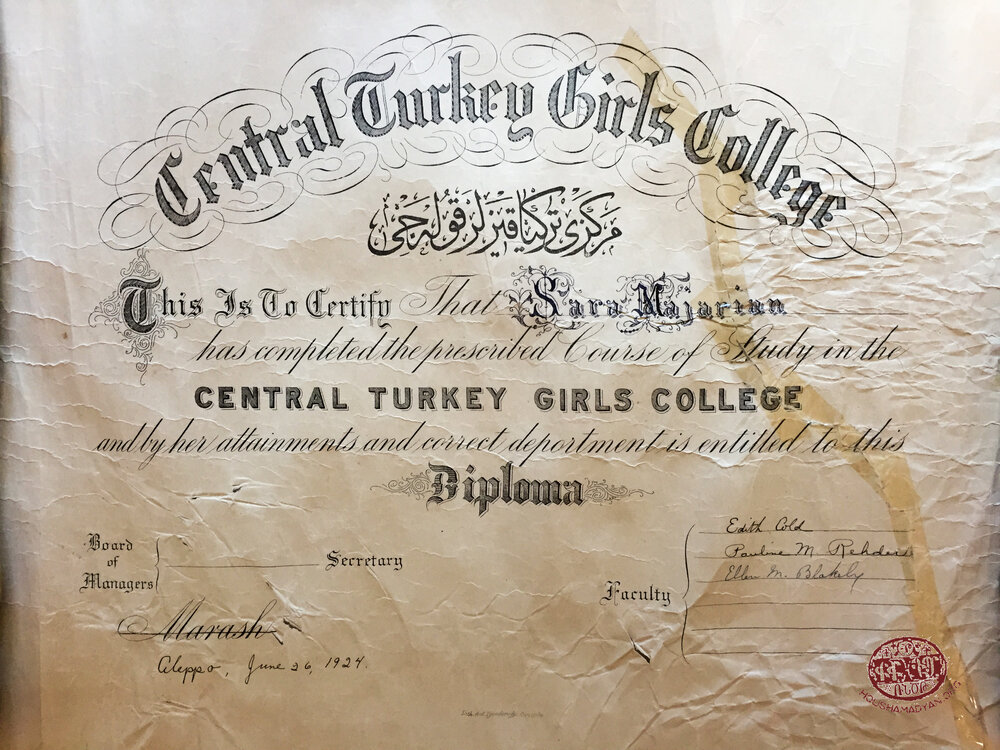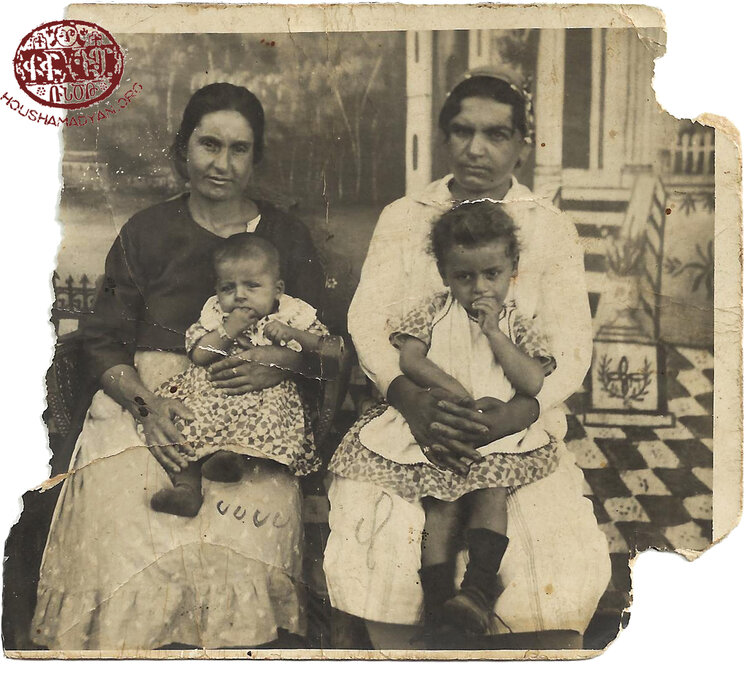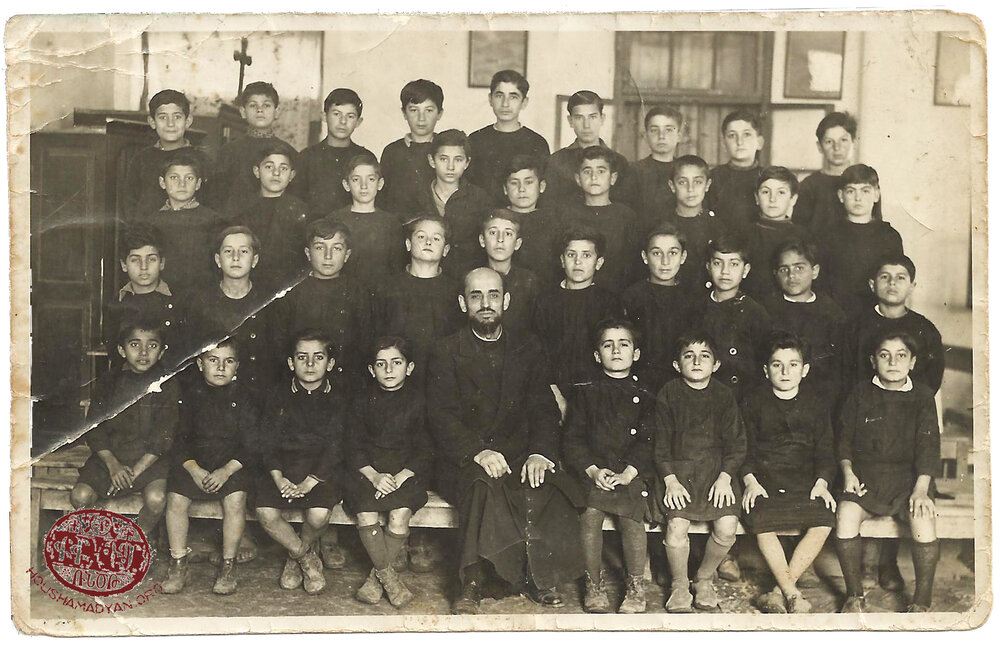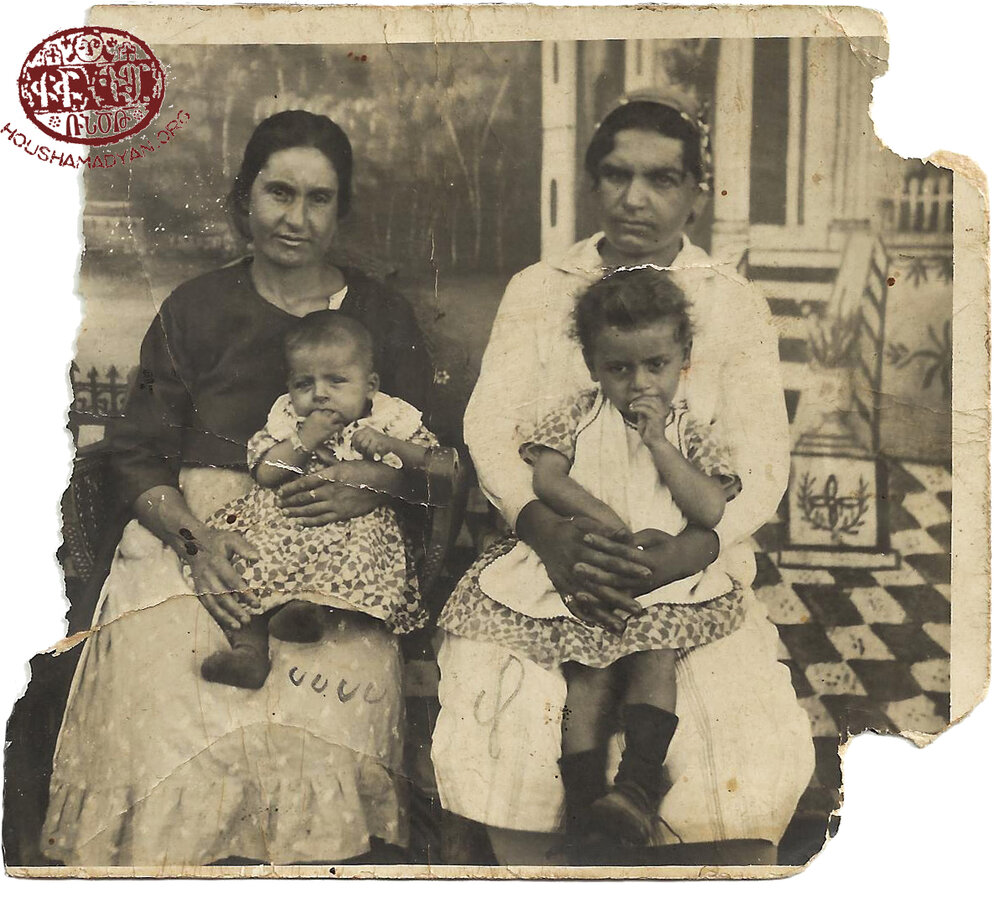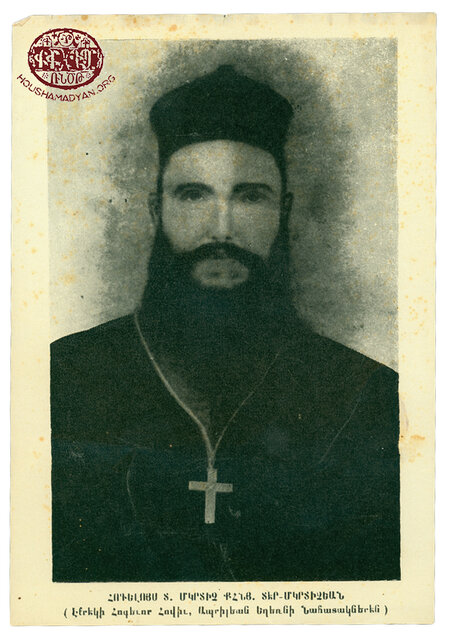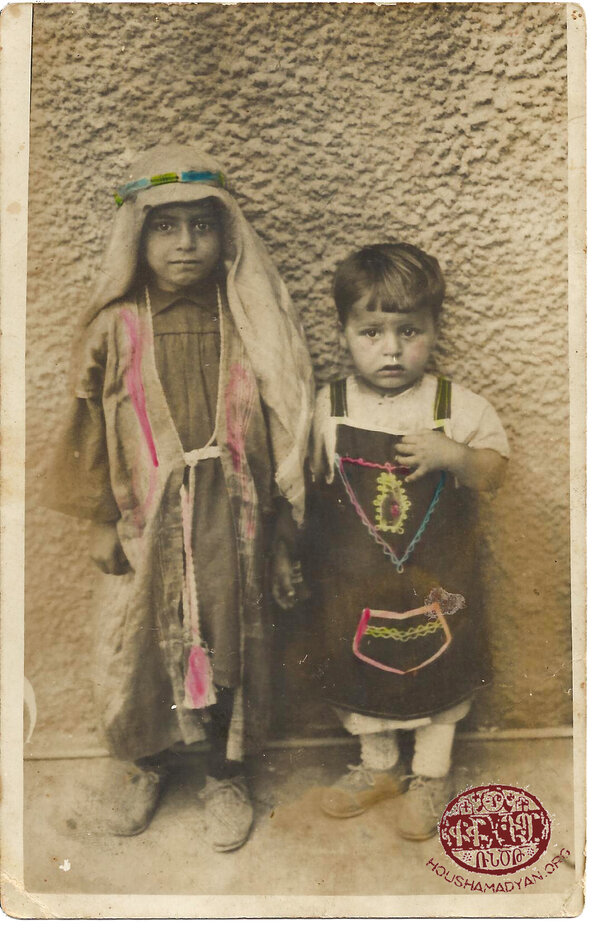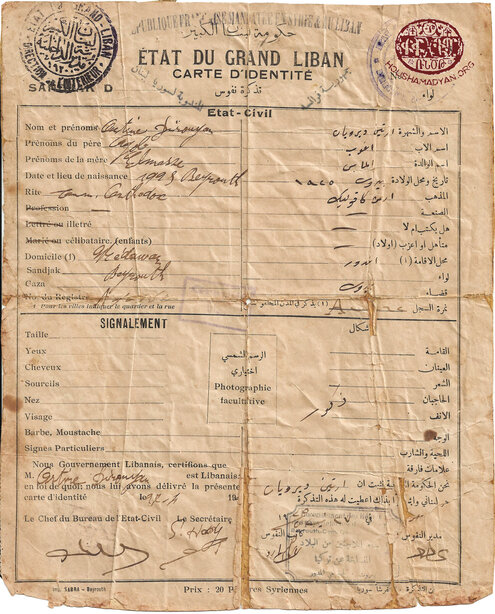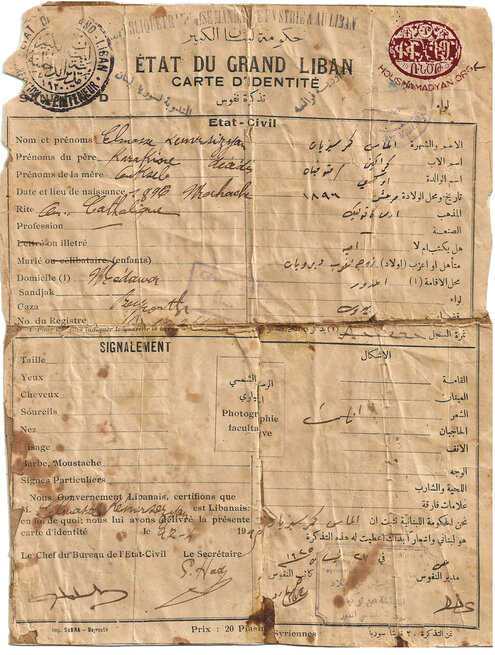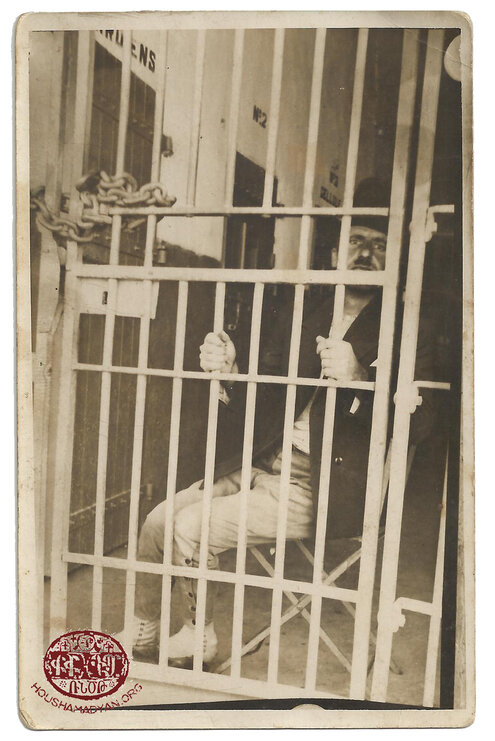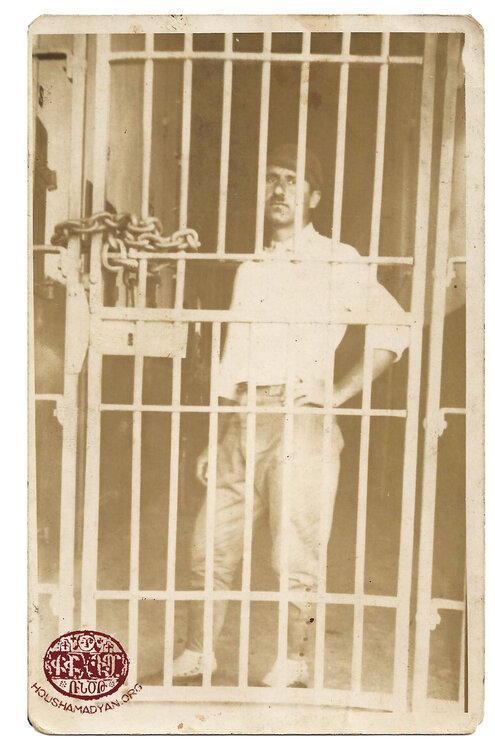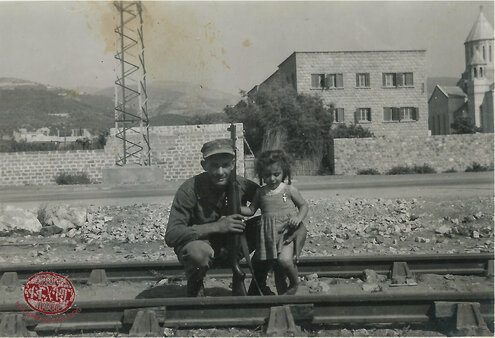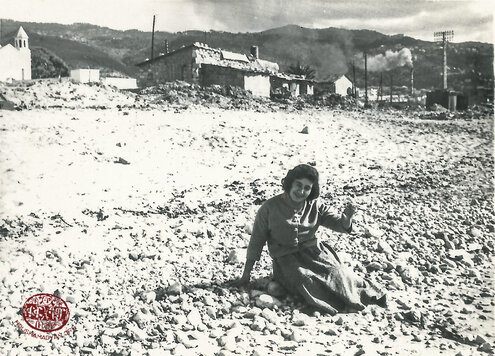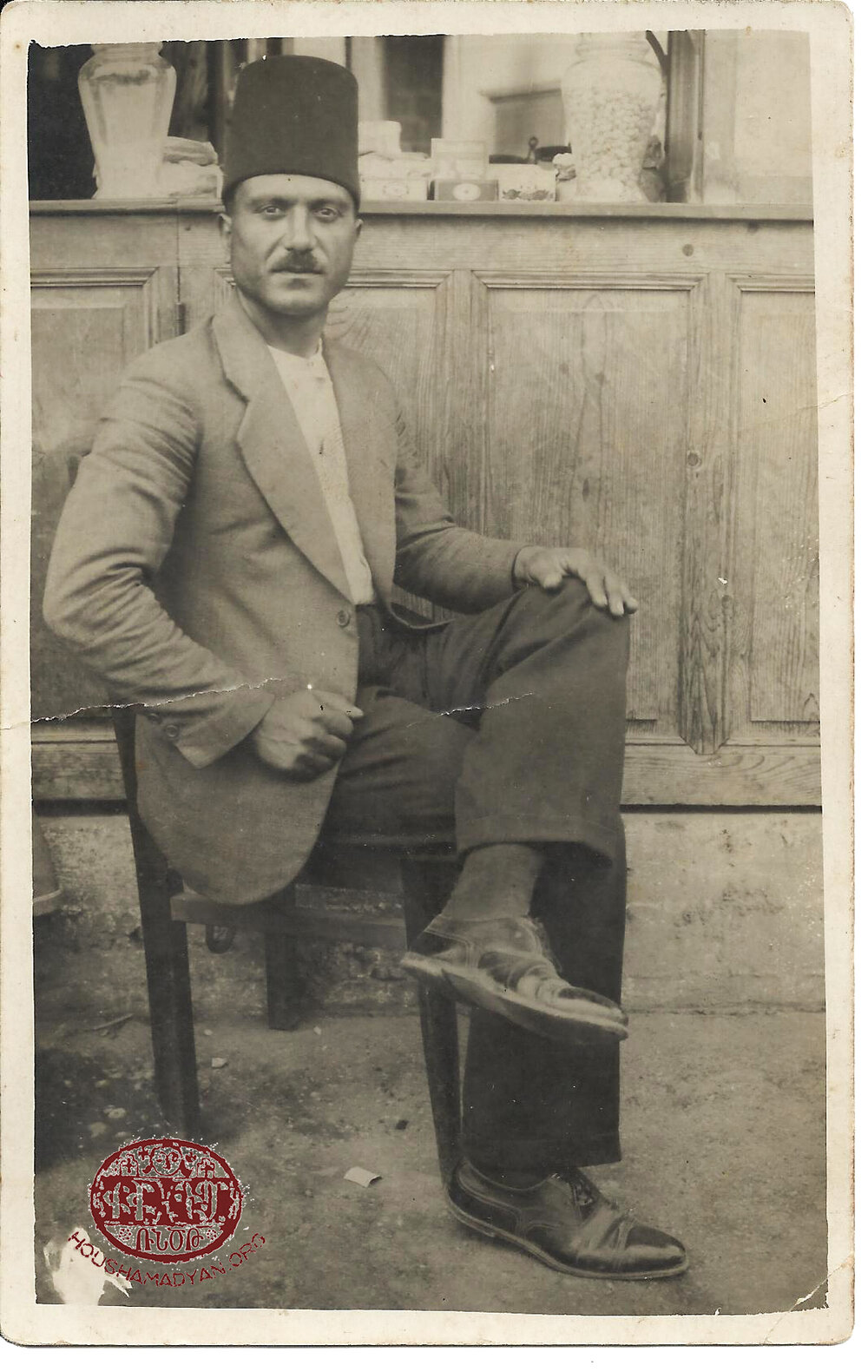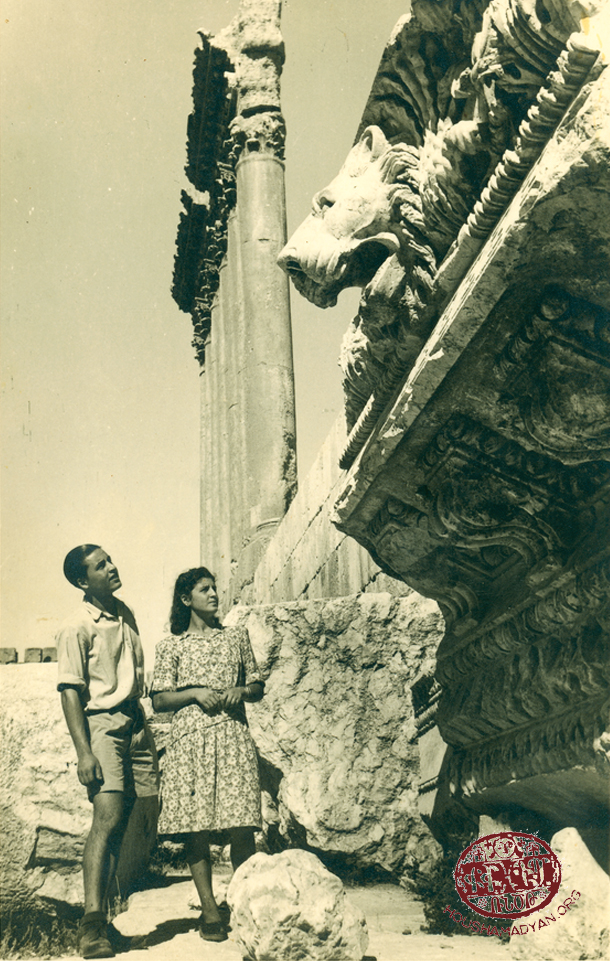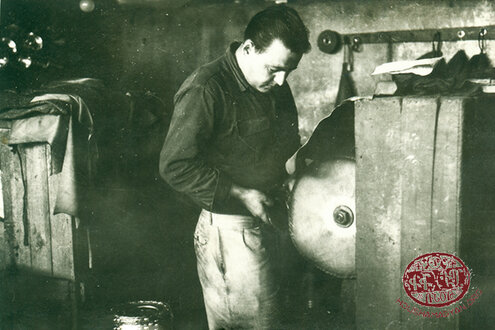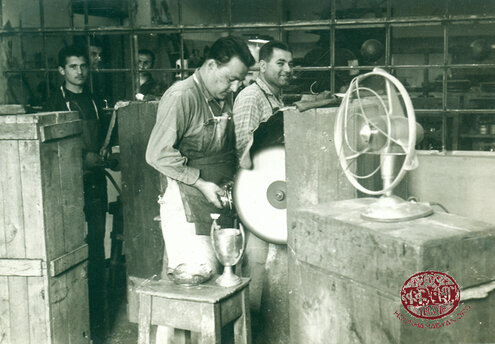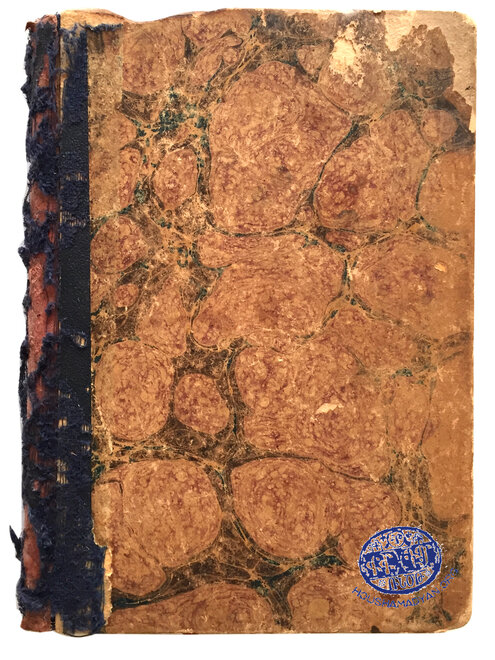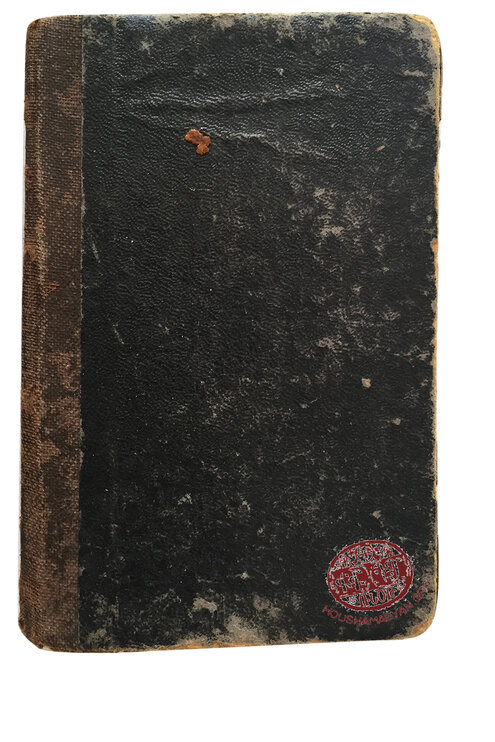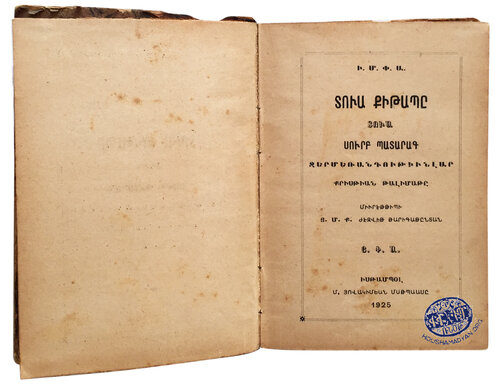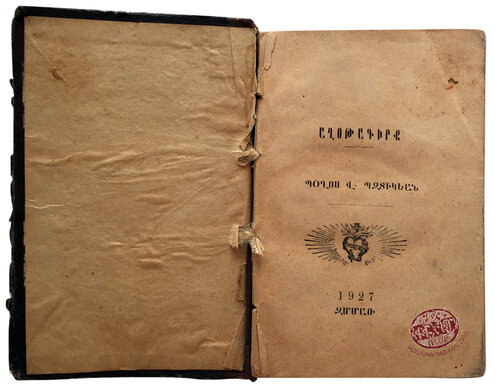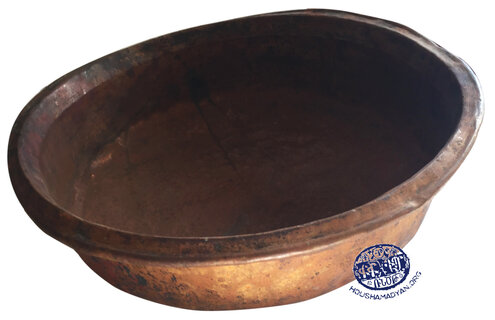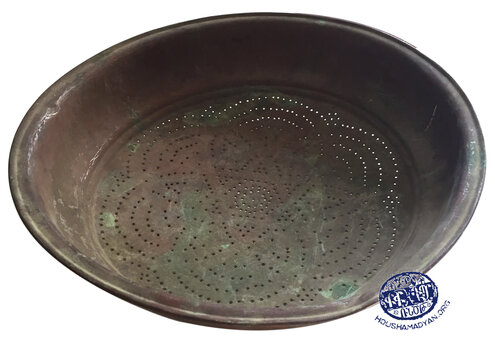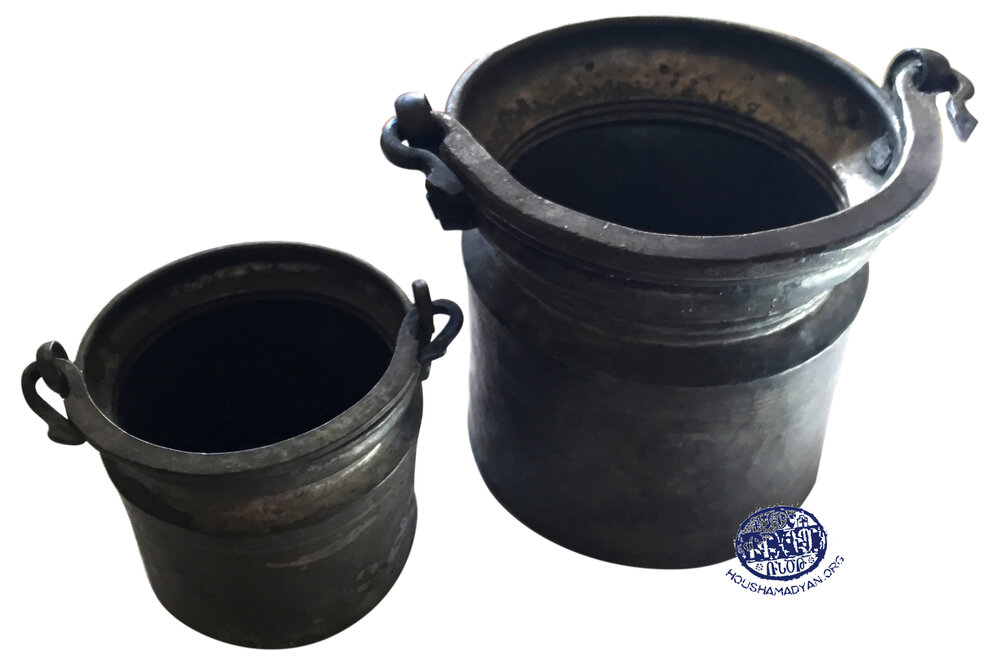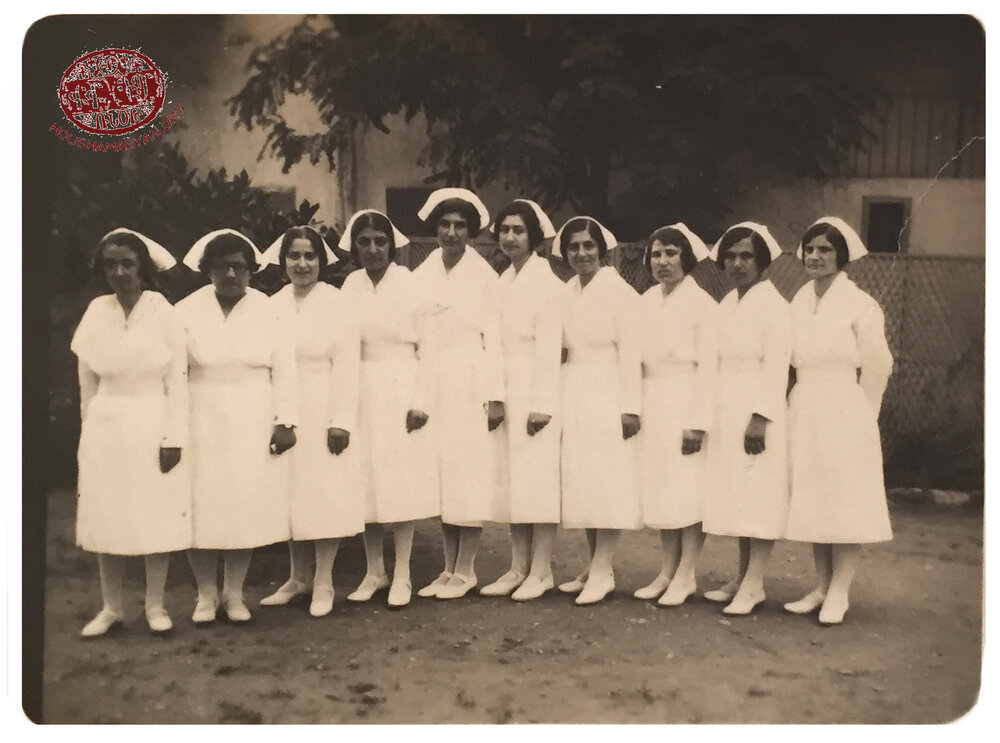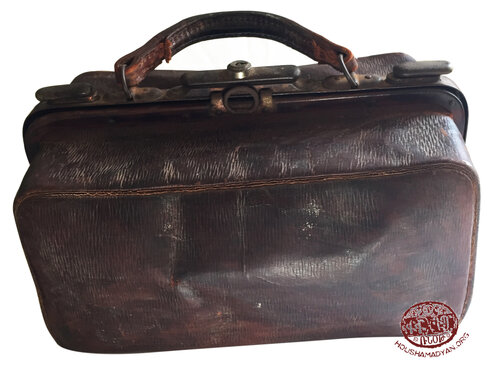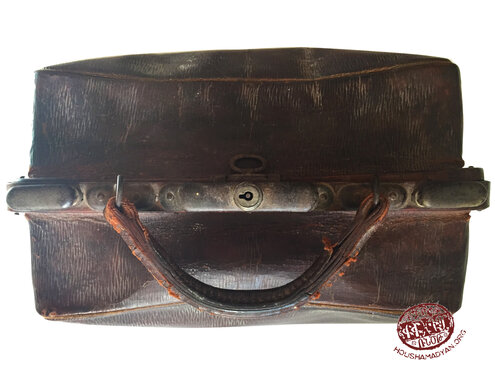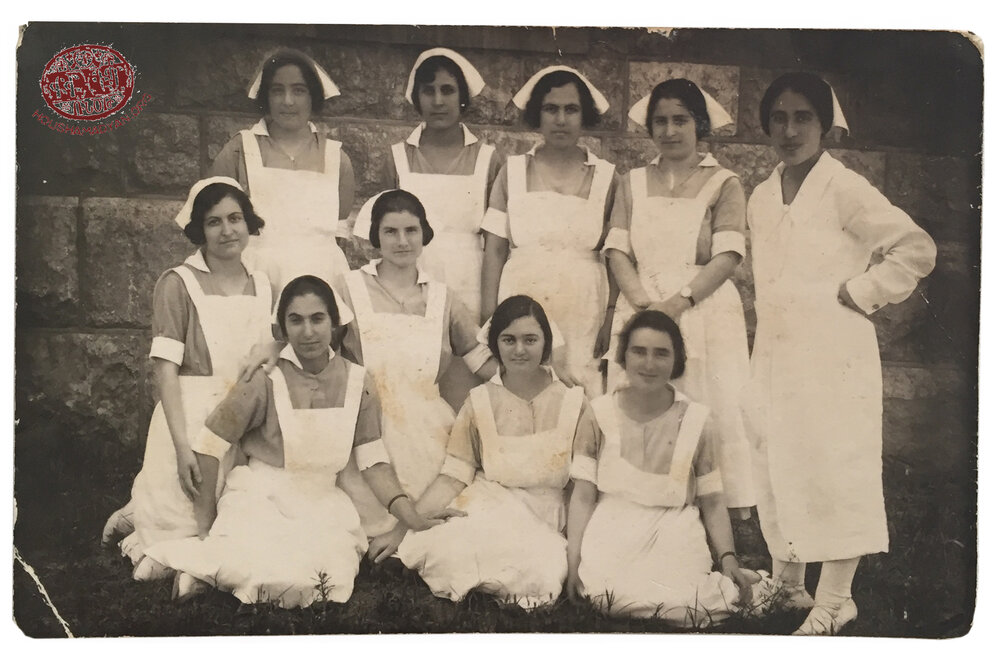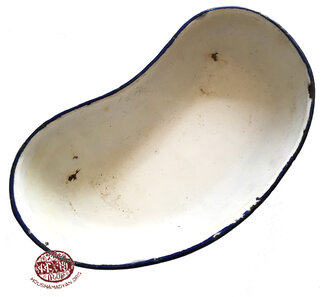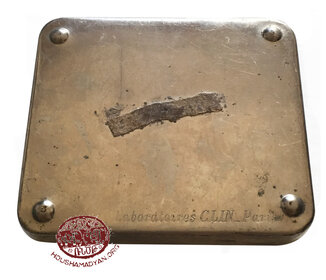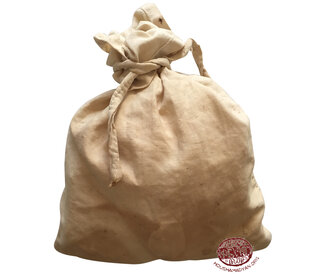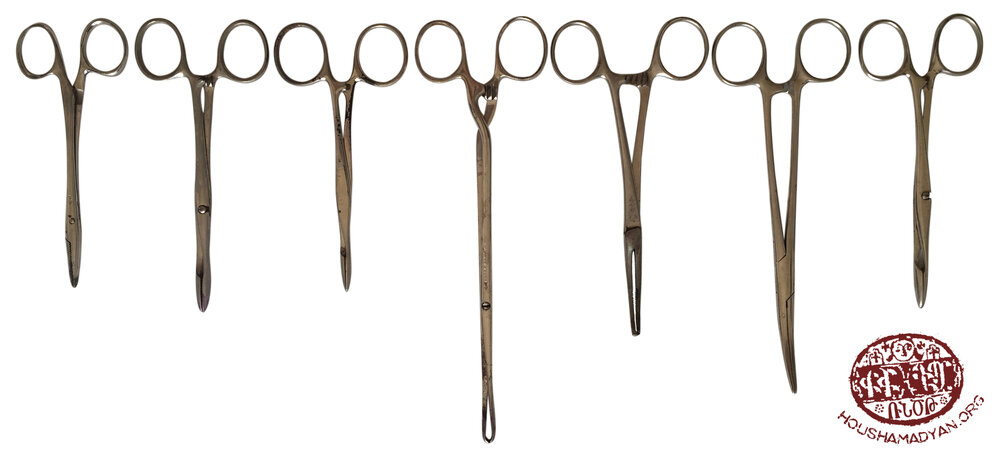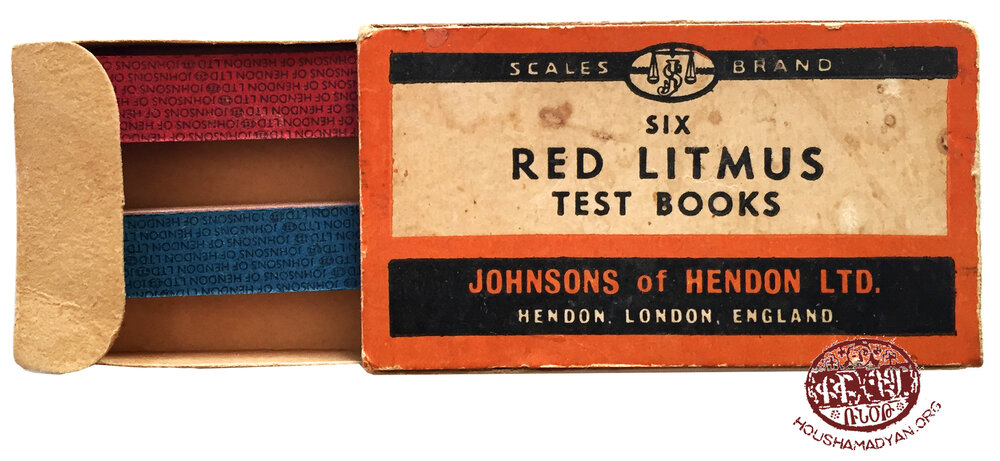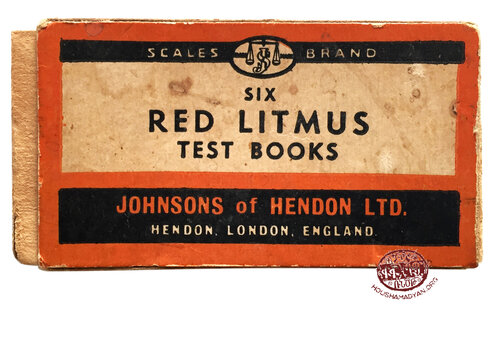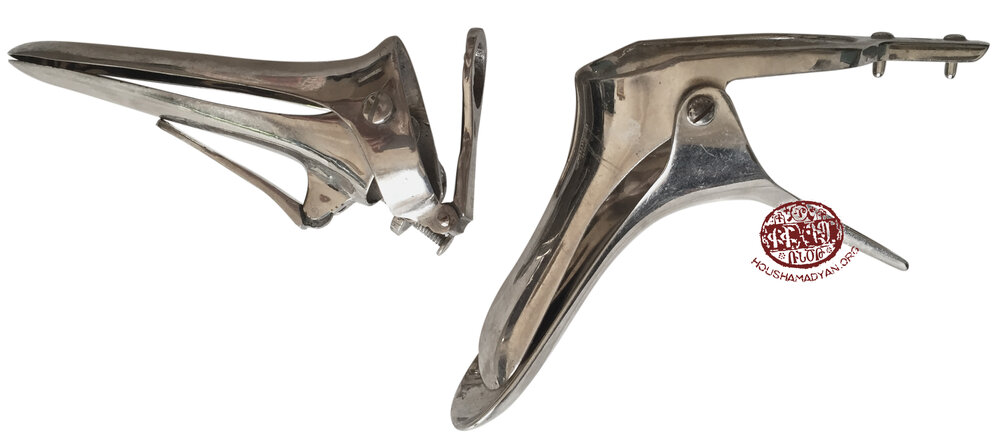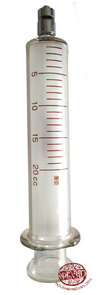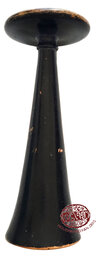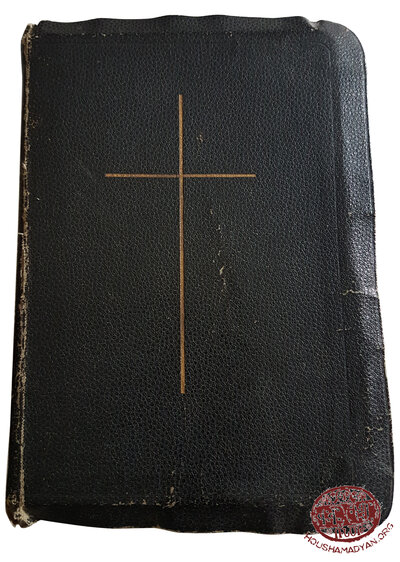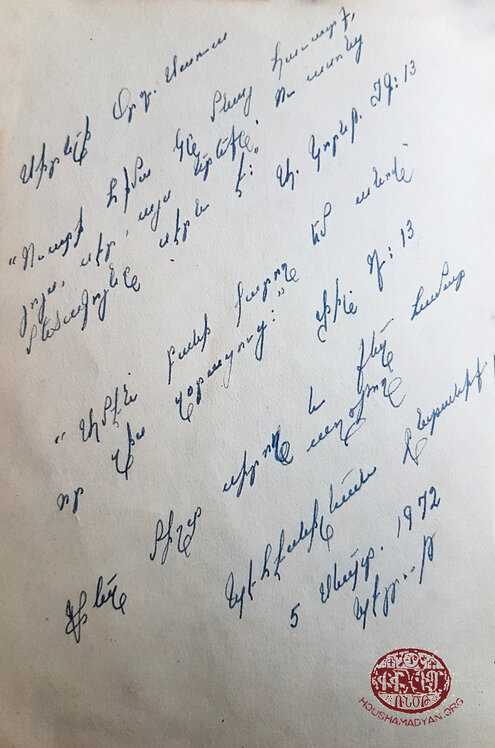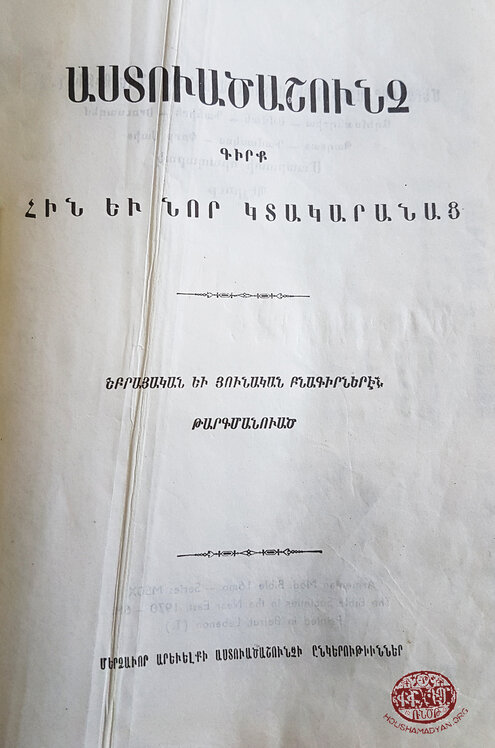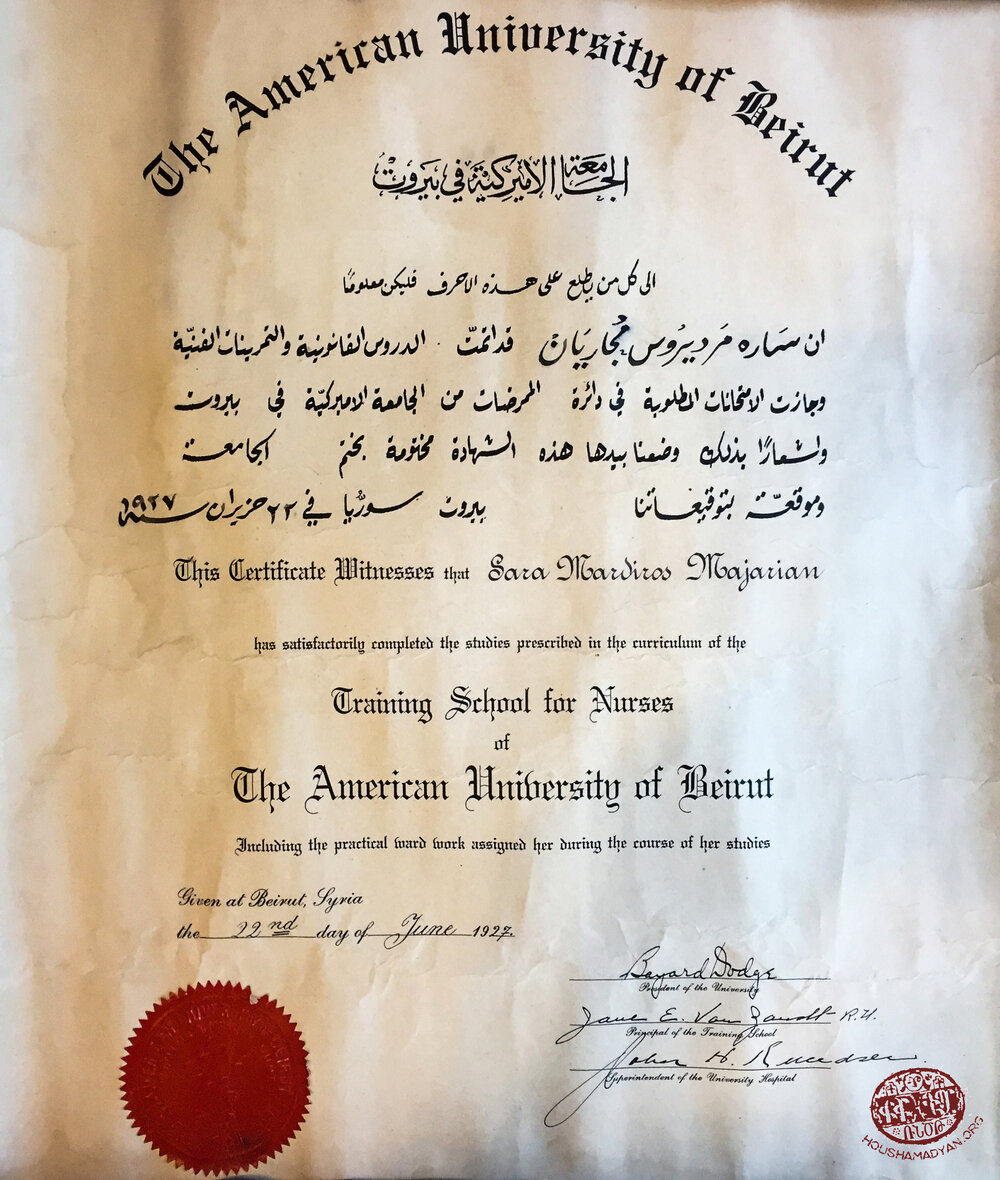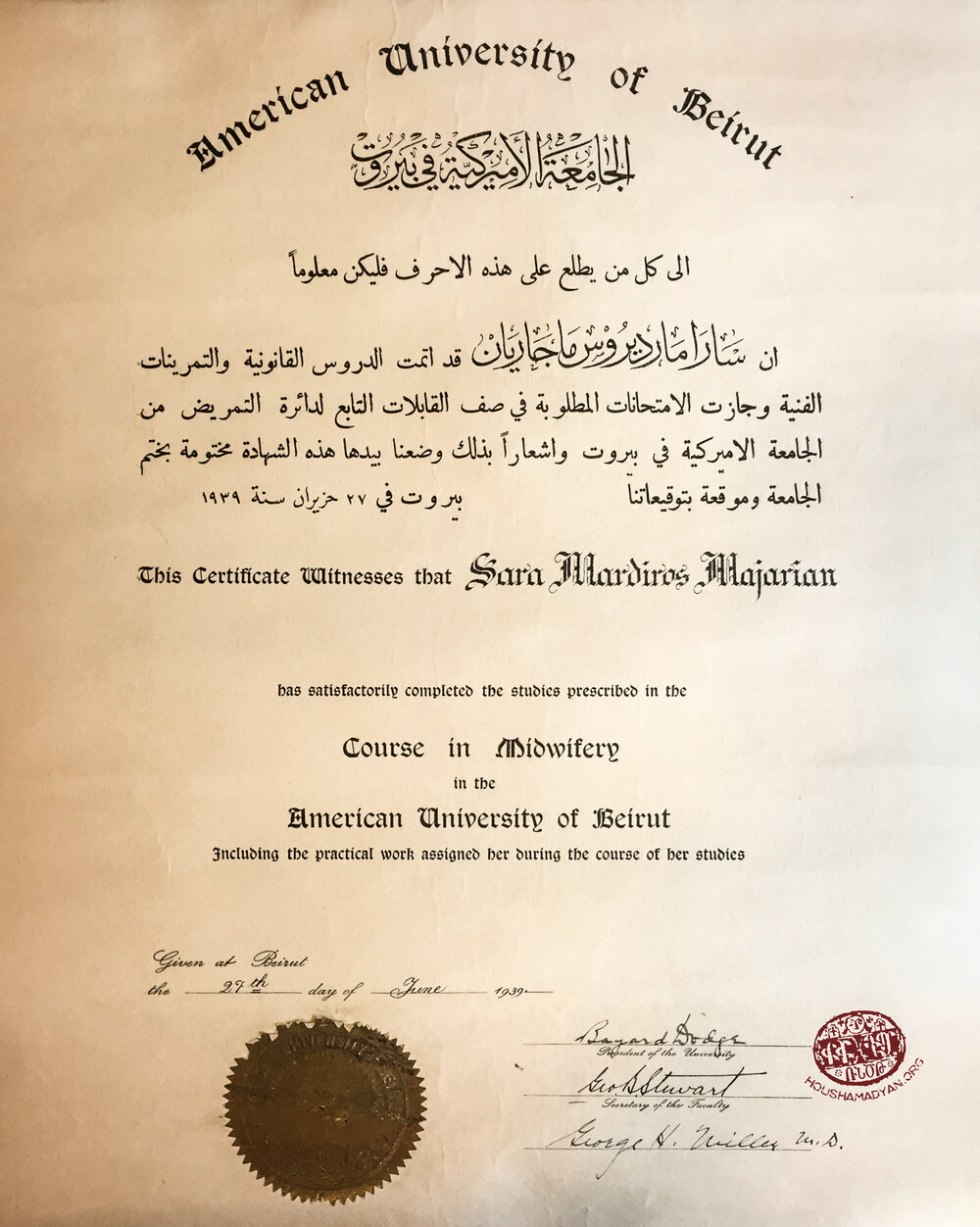Garo Derounian collection - Beirut, Lebanon
The material presented on this page was provided to us by Garo Derounian (Lebanon). These are the collections of the Madjarian and Derounian families. These two families, with roots in different areas (Trabzon, Kayseri/Gesaria, and Marash), were linked together by marriage. Their collections of memorabilia are currently in the care of Garo Derounian.

Derounian / Der Mgrdichian / Gemiksizian Branch: Marash, Kayseri/Gesaria, Trabzon
Garo Derounian’s grandfather was Hagop Diriiller, who was born in the Kishifli village of Marash (west of the city of Marash). He adopted the surname Derounian in the early 1920s, after emigrating to Lebanon. Garo’s grandmother was Elmasd Gemiksizian, who lived in the city of Marash until 1920, where she was employed by the Kerlakian family. Elmasd and Hagop met in the Armenian refugee camp of Beirut and married at the Holy Cross Church of the same camp. They had four children – Artin (born in 1925), Avedik (born in 1927, Garo Derounian’s father), Anoush (born in 1929), and Gadar (born in 1933). The family left the camp and moved to the newly built New Marash neighborhood of Beirut.
There, Avedik Derounian married Mary Der Mgrdichian, whose father, Mesia Der Mgrdichian, was from the Ekrek city of Kayseri; and whose mother, Haiganoush Der Mgrdichian, was born in Trabzon.
The men of Mesia’s family had been priests for generations. The family also owned land in Ekrek. We know that prior to the outbreak of the First World War, Mesia emigrated to the United States, where he worked in a factory in the state of Wisconsin.

Haiganoush also had three sisters in Trabzon. Her mother had died at a young age, after which her father had re-married. The family’s oral history has preserved a fascinating account of Haiganoush’s early life, which we have reproduced here – after her father’s second marriage, one of the family’s Turkish friends expressed a wish to adopt her. This was done, and Haiganoush moved to live with the Turkish family. She retained her Armenian name, but received an Islamic education.
The oral story of these events has not retained clear details of dates and locations. We only know that when Haiganoush grew up and was to be married, Armenian volunteers would not allow the marriage to go forward. They kidnapped Haiganoush and imprisoned her for some time, because she refused to abandon her adoptive family and considered herself more secure there. We assume that these events took place after the Armistice, or in other words, around 1919. They probably took place in the Adana area, where the Armenian Legion was active at the time.
Afterward, Haiganoush is married with an Armenian volunteer and she became pregnant. However, her husband is sent with his military group to Marash and they lost track of him after that.

It was in these post-war years that Mesia returned from the United States, probably in the hopes of finding relatives who had survived the Genocide. But he soon discovered that his family had been completely exterminated. It was during this time that Mesia met Haiganoush. Even though he was older than her, the two married. Haiganoush was still pregnant, but Mesia announced her that the coming child will be considered as his own. The daughter is born and she is called Nver (gift). Later all the family emigrated together to Lebanon, where they lived in Sarba (north of Beirut, near Junieh) alongside many of their compatriots from Gessaria who had resettled there.
Mesia and Haiganoush had four children – Manoug, Garabed, Noubar, and Mary (Garo’s mother).
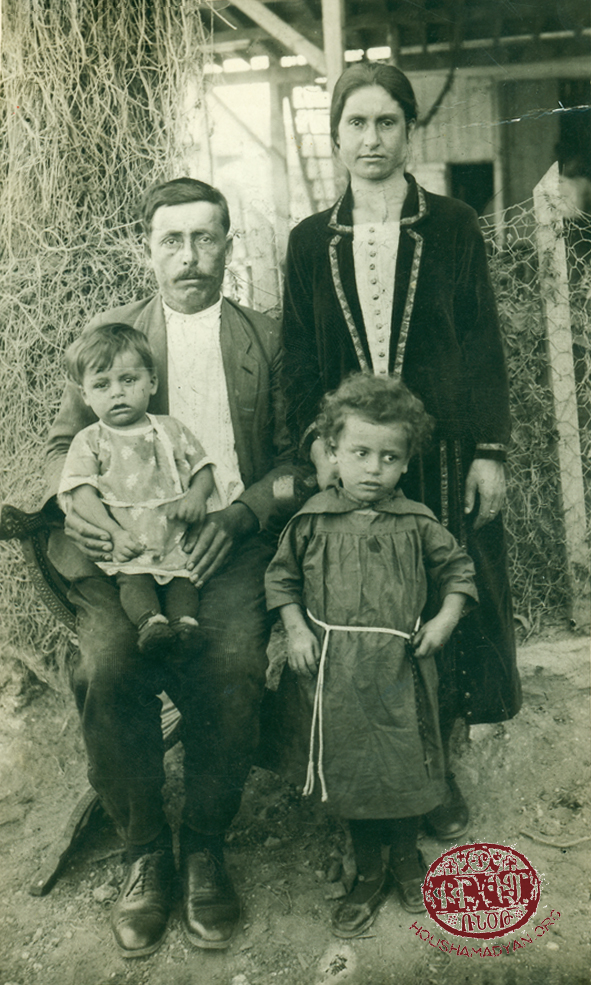

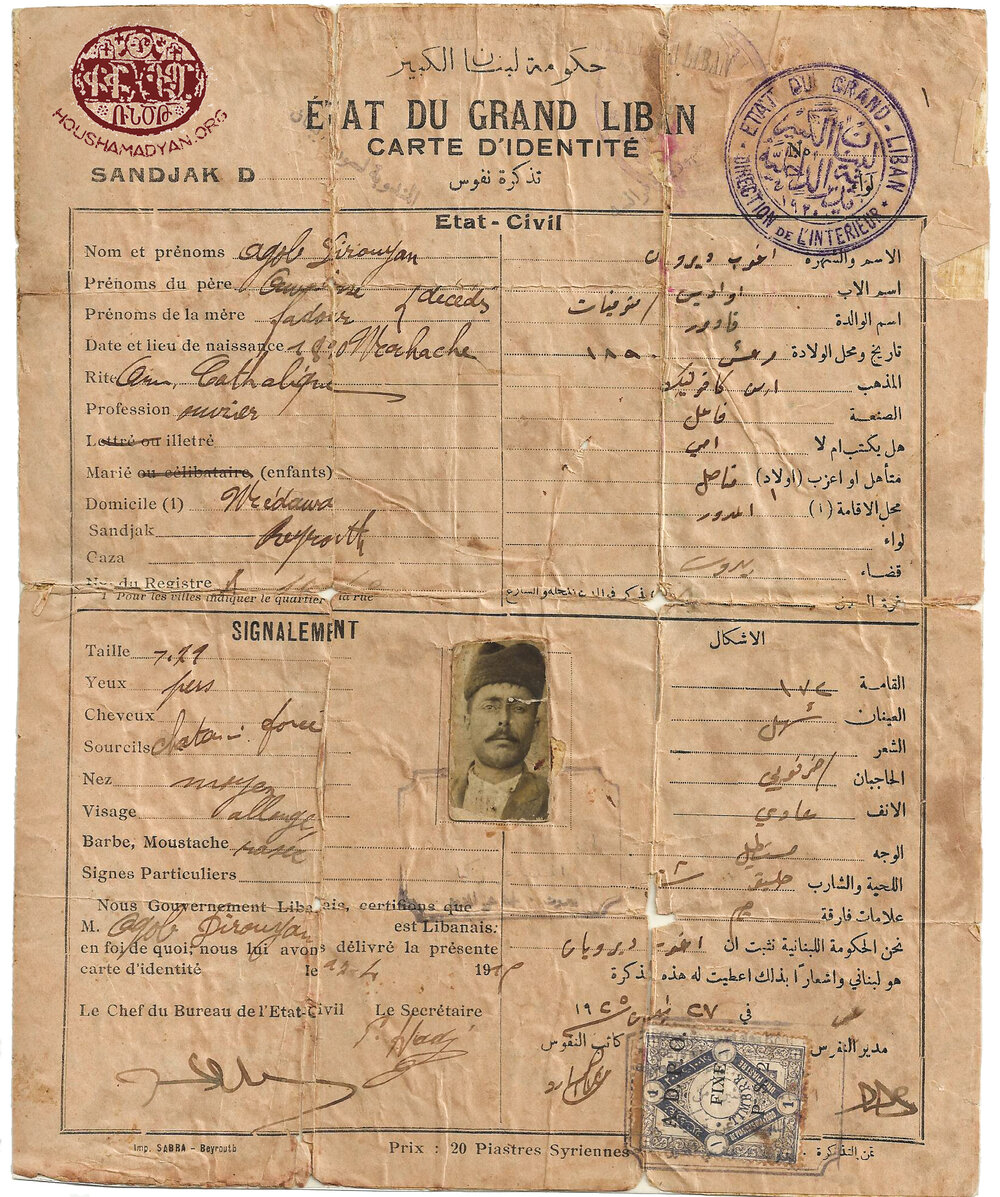
1. Artin Derounian’s Lebanese identity paper, issued in 1925. His place of residence is listed as the Mdawwar neighborhood of Beirut, which was where the Armenian refugee camp was located.
2. Elmasd Derounian’s (nee Gemiksizian) Lebanese identity paper, issued in 1925. The document lists her birthplace as Marash, her date of birth as 1896, and her father’s name as Karekin.
1. Giragos Gemiksizian (born in Marash, Elmasd’s brother), detained in a Lebanese jail. He was a builder by trade and many of the buildings built in Bourj Hammoud are thought to be the fruits of his labors. It is said that in the 1920, as a result of fraudulent information, he was imprisoned by the local authorities in the jail located in the Eshrefieh neighborhood of Beirut.
2. Giragos Gemiksizian, photographed in jail.
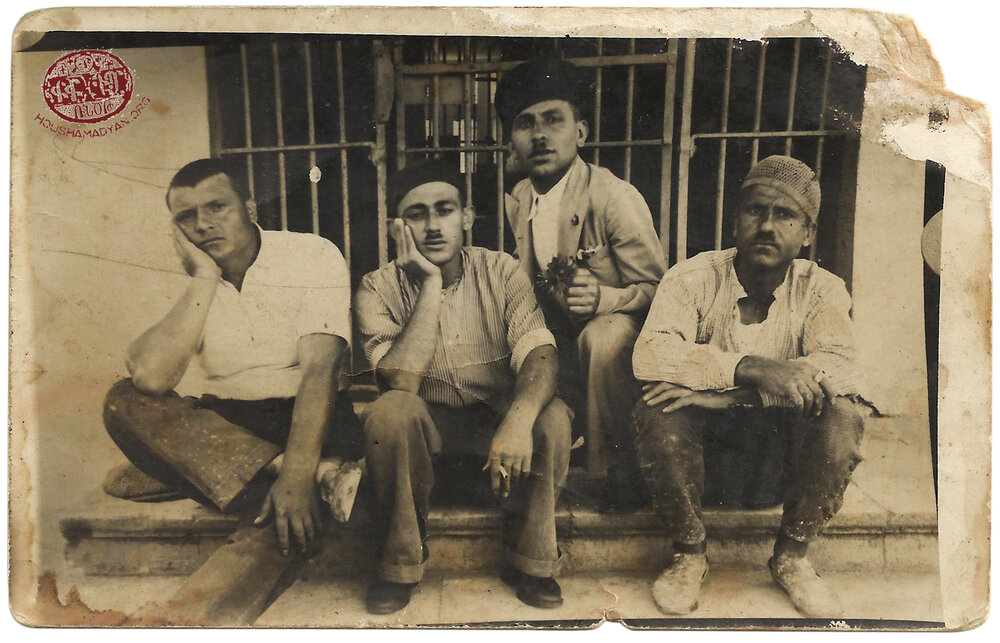

1. Antelias, Lebanon, 1958. In the background, the Catholicosate of the Holy See of Cilicia is visible. The soldier standing on the train tracks is American, a member of the American forces that had landed at this very location earlier in the same year. The girl standing beside him is Haiganoush Der Mgrdichian, Noubar Der Mgrdichian’s daughter. It should be noted that Mesia and Haiganoush Der Mgrdichian’s home was also nearby.
2. Mary Der Mgrdichian (later Derounian) photographed on the beach in Antelias (Lebanon), in the 1950s. On the left is the Antelias Catholicosate. The stone structure visible behind Mary is her family’s home.
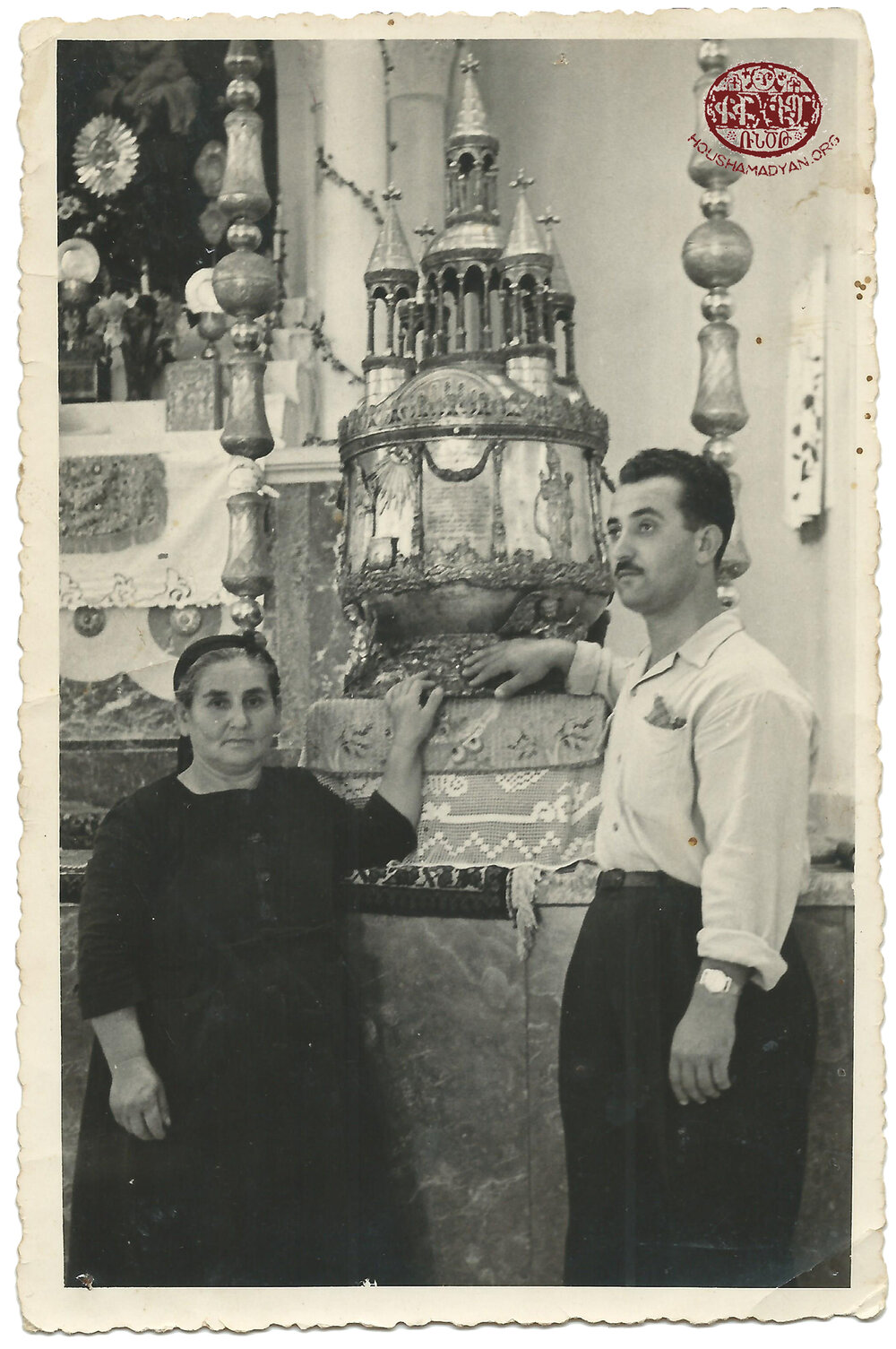

1. A Turkish-language prayer book, with text written in Armenian letters, belonging to Elmasd Derounian (nee Gemiksizian). Doua Kittab, M. Hovagimian Printing Press, 1925, Istanbul.
2. Father Boghos Bzdigian, Aghotakirk [Prayer Book], Bzommar, Lebanon. The author, who was also one of the founders and the first principal of the Mesrobian School in Bourj Hammoud, gifted a copy of the book to his student, Avedik Derounian.
Sarah Madjarian Branch: Marash

Much of the material presented on this page belonged to Sara Madjarian, who was born in Marash around 1909. Sara and her sister Margo were the only members of their family to survive the Armenian Genocide. After the First World War, they found shelter in several orphanages, among which were the girls’ orphanages in Shemlan (mountainous Lebanon, near Aley) and Ghazir (north of Beirut). Both orphanages were administered by Near East Relief (NER).
On June 26, 1924, Sara received her certification as a nurse from the Central Turkey Girls’ College in Aleppo, which had formerly operated in Marash. Thereafter, alongside her sister Margo, she attended the American University of Beirut, where she perfected her nursing skills. Sara became a head nurse. Margo married early in life, but Sara continued her education, and graduated from the same university in 1939 as a midwife.

Sara worked in several Armenian diasporan communities, including Aleppo, the Beirut refugee camp, Bourj Hammoud, and Anjar. As a midwife, she worked alongside Danish missionary Maria Jacobson and Swiss missionary Jakob Künzler. Miss Sara resided in the Sis neighborhood of Bourj Hammoud. She rode her bicycle around the Armenian neighborhoods, making the rounds of the local Armenian families who required her medical advice. She was also a member of a group of volunteers from the staff of the American University of Beirut hospital, who visited various areas of Lebanon and provided free medical care to the impoverished locals.
We know that in the 1950s, Miss Sara visited the United States, where she met some of her relatives from Marash.
Miss Sara was a Protestant and a fervent Christian. She devoted much of her time to reading the Bible. She died in September of 1994, in Lebanon.
Sara’s sister Margo married Haygazoun Hagopian, a young man who had come to age in orphanages. Miss Sara, who remained unmarried until the end of her life, provided much support to her sister’s family. Haygazoun’s daughter was Aida Hagopian (later Rafayelian). Aida’s daughter, Caroline, is married to Garo Derounian. This explains how Miss Sara’s collection came to be in the possession of Garo Derounian.
